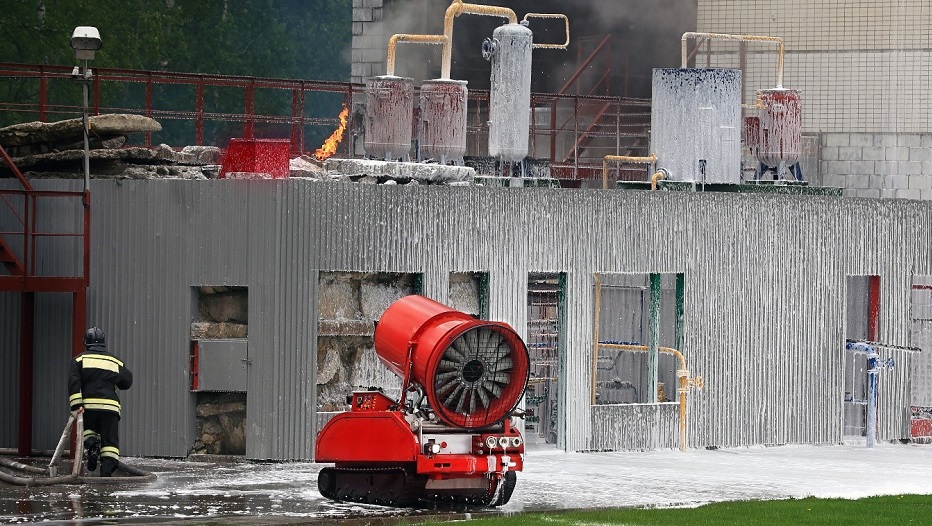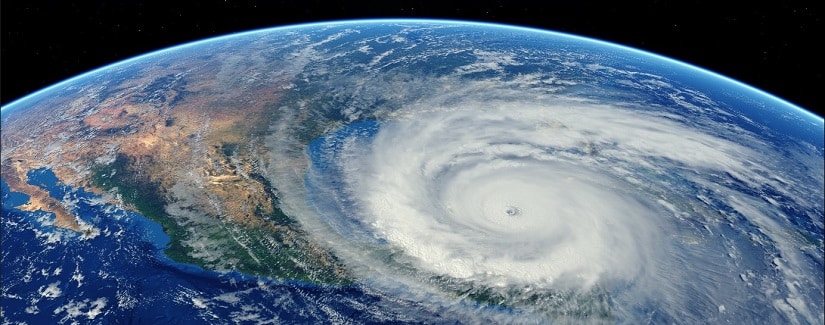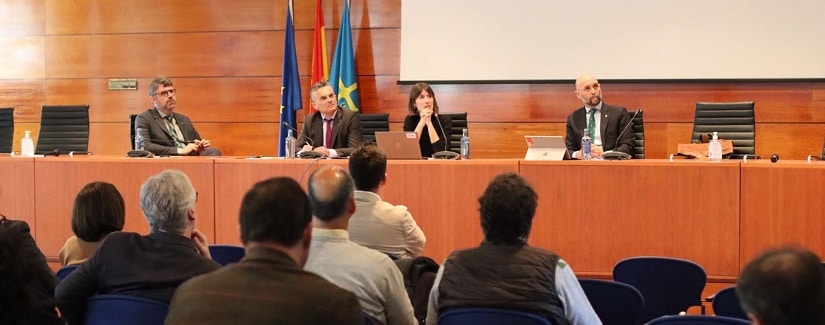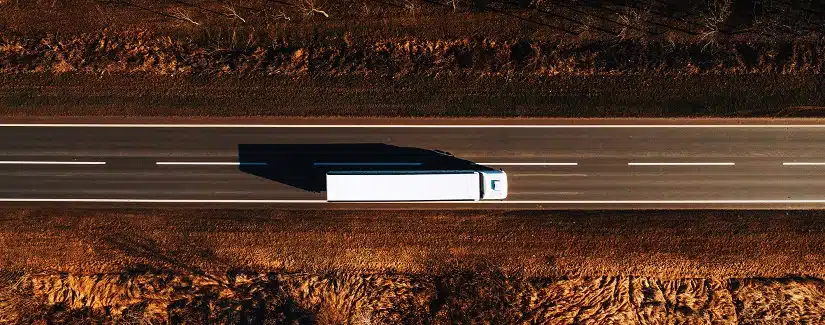In recent years, the risks associated with firefighting tasks have been mitigated in the form of a new ally: robots, which can perform the most hazardous tasks while protecting the physical integrity of firefighters, accessing confined spaces and gathering information to speed up the fire extinguishing process. This budding approach has already seen significant success, as in the case of Colossus in putting out the fire that destroyed Notre Dame in 2019 and other international projects being performed by autonomous vehicles to help with this type of task.
The progressively more common trend of automating logistics warehouses, “as pioneered by Amazon,” is improving fire prevention in facilities. “As the machinery used is electric and not driven by combustion, it is not affected by task monotony. This means that the safety parameters are rather high, avoiding human error,” indicated Leonardo Nomdedeu, computer engineer and member of the Europe-wide Guardians project, for the development of robots that help firefighters with the most hazardous tasks.
However, robotics has been working for years on an incident reaction plan, with fire extinguishing systems designed to analyze and pinpoint incidents, perform search and rescue tasks, monitor hazardous variables, and primarily control and put out fires. In this connection, there are two types of models:
– Fixed systems, such as automatic sprinklers and alarms, which are used in spacious, crowded, and hazardous areas to quickly extinguish any threat. Generally speaking, these are simple systems that are mainly based on the use of UV or infrared sensors and can only operate in limited spaces.
– Mobile systems, generally in the form of remote-controlled vehicles with built-in firefighting tools. They are capable of traveling to areas that are unsafe for humans using a variety of sensors, visual cameras, infrared, and other technological resources that send navigation information to a remote operator.
This group includes aerial robotics, such as drones—for a more expansive view of the situation—and indoor robots, which can put out fires from a small distance. “Currently, they use remote controlled jets that can get closer to the source of the fire without exposing humans,” the expert added.
Drones and autonomous positioning systems are particularly useful in forest fires, as “they make it possible to analyze larger areas of a forest in the search for spots in which fires reappear or victims, and provide emergency teams with an eye in the sky. This information is vital to the decision-making process on the ground.” In the future, these drones are expected to help actually extinguish fires, when they are capable of carrying large volumes of weight with them.
Colossus, an example to be followed
In terms of their technology, firefighting robots are equipped with a wide variety of sensors and actuators: from infrared cameras that firefighting teams use to view sources of heat from control stations to, in some cases, systems to identify nearby obstacles and even hazardous gas and radiation sensors. The robots are also capable of photographing and mapping the inside of buildings during fires.
However, at the moment, “what helps industrial firefighters the most are robots that help them to transport the material they need to perform their duties,” Leonardo Nomdedeu noted. This was the main role played by Colossus, the automated vehicle that helped to extinguish the fire that ravaged Notre Dame in April 2019. This type of device can transport loads weighing up to one ton, bottles of oxygen and material, push weights of up to two tons, drag hoses, insert heat cameras into inaccessible areas to identify leaks, locate the source of fires and determine whether the structure is stable or at the point of collapse.
Even so, our expert warns that currently there are very few robots that can actually access a fire. “On account of their tank-type structure, with treads instead of wheels and electronic protection systems, they can only withstand a fire for a few minutes,” he asserted. These remote-controlled robots are equipped with water jets supplied from nearby locations

The firefighting robot industry is due to see a CAGR of 13% between 2019 and 2025, surpassing industrial robotics for the first time.
, and other tools and even evacuation systems for injured persons.
However, it is important to note that fires are extremely hostile environments, in which automated robots require significant protection for their sensors, actuators and movement systems, as electronics are very sensitive to high temperatures. “Furthermore, the heads of these firefighting teams perform an in-depth analysis on whether action is required. In many cases, the best option is simply to wait until the fire dies out naturally, ensuring that it does not spread,” he added.
Although not all firefighting teams can afford the luxury of having this type of device and the training required to use them, some are already in the field testing phase, preventing humans from needing to get close to the flames, which could potentially expose them to harmful gases and the risk of explosion. “I’m sure that they will have a significant impact when their use becomes widespread,” Nomdedeu conceded. In fact, in just a few years’ time, some autonomous robots will be able to access hazardous locations with advanced, effective, and lightweight fire extinguishing systems “in addition to serving as the ears and hands of humans, who we expect will remain further in the background to ensure their safety.”
This is the case of Colossus and other robots, like the one under development by a team of researchers at the Malaysian Institute of Technology, Qrob, whose prototype uses a Go Pro camera, sensors to detect flames and locate obstacles, a navigation system that features a motor, an Arduino controller and a remote control transmitter, in addition to two containers that pump water and fire-extinguishing liquid. Another example can be seen in Thermite, created by Howe & Howe Tech designed in the form of a heat resistant tank, capable of climbing grades of up to 70%, remote controlled at distances of up to one kilometer, and capable of towing loads of up to 800 kg.
“For the use of robots to leave a significant footprint, a large number of industries must be involved, making progress with materials, extinguishing systems, batteries, movement systems, etc.”
Future outlook
“This type of project requires significant investment and a lot of talent,” confessed Leonardo. To this end, around the world, public and private institutions are coming together, including universities and research centers and private companies, to add to or facilitate the placing of these solutions on the market, as was the case of the Guardians project in which he participated, forming part of Jaume I University in Castellón, under the European Union FP6 framework program. “These multidisciplinary teams are provided with funds [in this case, by the European Union] to fully or partially investigate critical points in this field,” he asserted.
Despite this international cooperation, the engineer emphasized the fact that “like all research, there is an obvious financial hurdle,” even more so when it is not a consumable product, but a product to react in the event of a catastrophe, “as the return on investment isn’t seen as such.” Nevertheless, there are great expectations, as it is expected that the firefighting robot market will witness a CAGR of 13% between 2019 and 2025, according to a recent Market Research report. The growing trend is such that in the coming years, this industry is expected to surpass industrial robotics for the first time and challenge consumer robotics for the leading position.
For their use to leave a significant footprint, a wide number of industries need to be involved, as greater research is needed in materials, more advanced extinguishing systems, more powerful and resistant sensors, motors and batteries that withstand extreme situations, movement systems that facilitate maneuverability in unknown spaces littered with debris and unexpected obstacles, etc. To this end, “we must be able to reduce their cost to democratize their use and generate a real impact.”
Along these lines of research, huge steps forward are being taken with two-legged and four-legged robots, from drones and sensors to the ability to communicate and negotiate between each other regarding complex collaborative tasks. In fact, algorithms are now being applied to assign different locations for each autonomous vehicle to perform firefighting tasks, as a robot by itself is not enough, whereas the combined efforts of many can disturb one another’s efforts and even collide if their relative distances are not correctly coordinated and controlled.
The main challenge “is obtaining autonomous robots that are capable of making correct decisions between them to rescue victims, prevent leaks of gas and hazardous substances, and extinguish fires earlier and better, without placing the lives of firefighters at risk, collaborating with them safely whenever necessary.”
This article was written with the participation of…
 Leonardo Nomdedeu a computer engineer and holder of a master’s degree in Smart Systems, Mechatronics, Robotics, and Automation Engineering from Jaume I University. He also has a master’s degree in Business Management from EAE Business School.
Leonardo Nomdedeu a computer engineer and holder of a master’s degree in Smart Systems, Mechatronics, Robotics, and Automation Engineering from Jaume I University. He also has a master’s degree in Business Management from EAE Business School.His extensive experience led him to found Boreal Open Systems and participate in the creation of a number of startups, including Molexplore, RIS Technologies S.L., or Thinking4U. He is an expert in systems architecture and applications development, in addition to being an international speaker at a range of business schools and universities. His specialization in health technology has seen him participate in the technology-focused Healthtech Forum Venture. He has released 14 publications in the fields of robotics, image analysis and sensor fusion.
He has formed part of the research team on the Europe-wide Guardians project (a group of assistance robots not controlled by humans used employing aggregated navigation based on olfactory sensing), that has constructed a hive of automated robots designed specially to help firefighters when searching large-scale warehouses.




